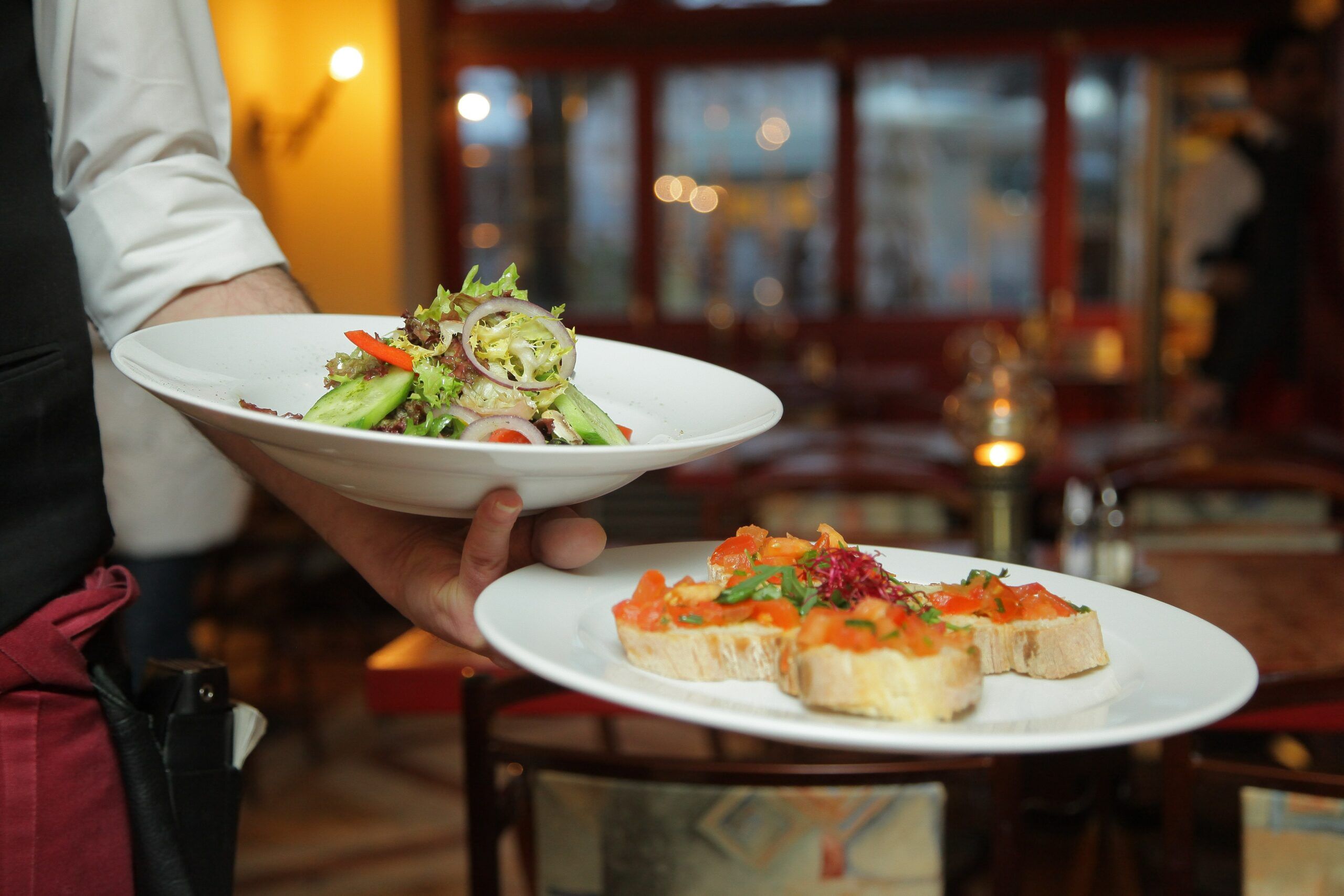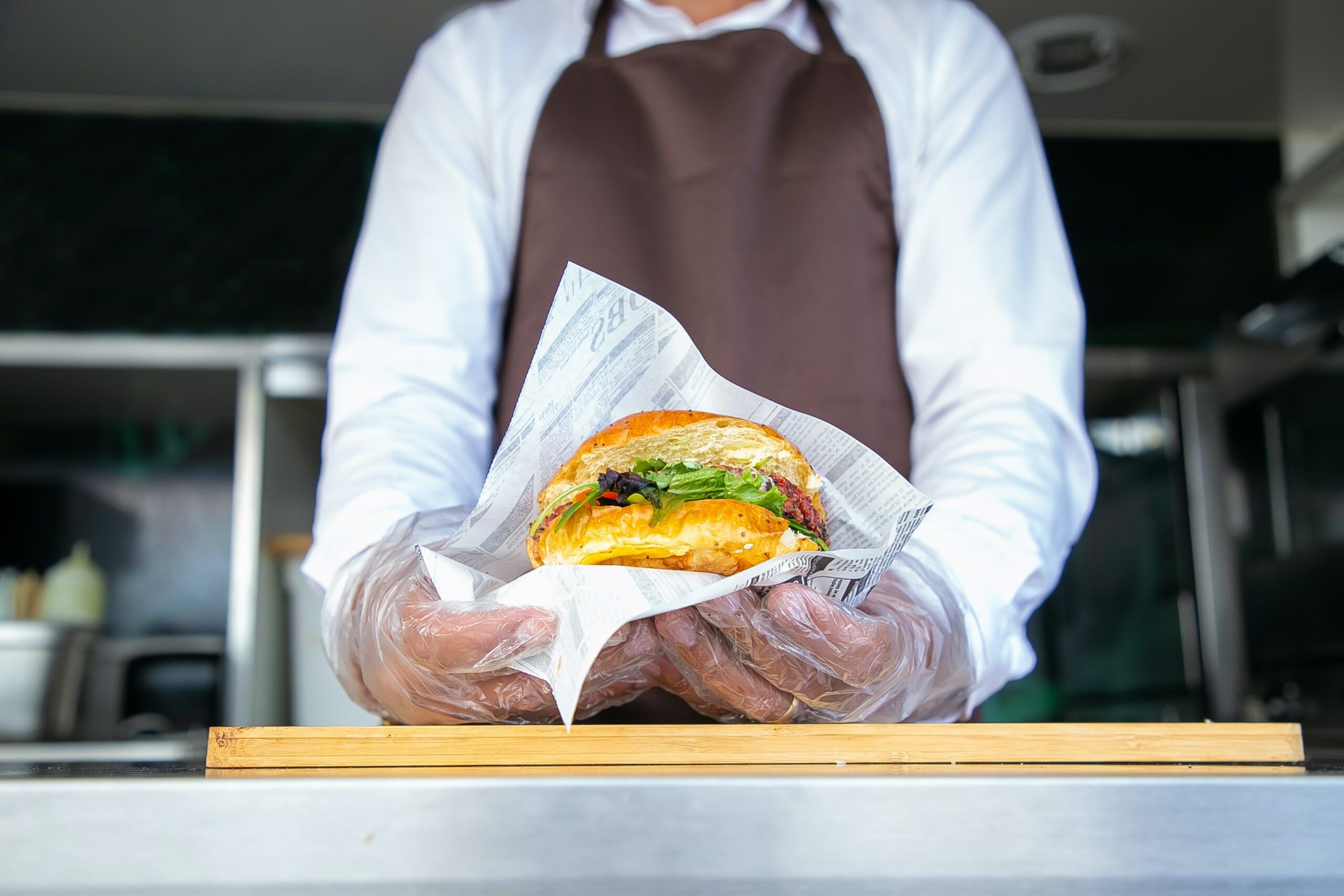- What is a virtual kitchen, and why should you consider launching one?
- How do you set up a virtual kitchen, and what are the key components?
- What are some of the best ways to market and promote your virtual kitchen to potential customers?
- What are some of the challenges you may face when launching and running a virtual kitchen, and how can you overcome them?
These days, people are cooking at home more than ever. And with the rise of food delivery apps, it’s easier than ever to get restaurant-quality meals without leaving your house.
If you’re a professional chef or have experience running a catering business in the restaurant industry, you may be wondering how you can get in on this trend. One option for many restaurants is to launch a virtual kitchen.
A virtual kitchen is a restaurant that exists only online. Customers order through a food delivery app or website, and the food is prepared in a shared commercial kitchen space.
Known also as “cloud kitchens,” “dark kitchens,” or “ghost kitchens,” virtual kitchens are a growing trend in the food industry. And there are plenty of reasons why you should consider launching one.
For starters, virtual kitchens require less overhead than traditional restaurants. There’s no need to lease or build a brick-and-mortar space, and you can often share kitchen space with other businesses. This means you can launch your business with less capital.
Let’s look at everything you need to know about launching and promoting a virtual kitchen to get started on your own food delivery business.
What is a virtual kitchen, and why should you consider launching one?
As we said, a virtual kitchen or virtual restaurant is an online-only restaurant. When customers order food, it’s prepared in shared commercial kitchen space and delivered to them. With a virtual kitchen, there’s no need to build or lease a brick-and-mortar restaurant space, which can save on start-up costs.
Another advantage of virtual kitchens is that they’re often located in high-traffic areas. This means your food will be more visible to potential customers, and you won’t have to spend as much on marketing and promotion.
Here are reasons why you should consider launching a ghost kitchen business:
1. Virtual kitchens require less overhead than traditional restaurants.
A less overhead place of business requires less money to maintain, leaving you with more to reinvest in other areas or simply pocket as profits. This means you can concentrate on other business areas or put more money back into growing the restaurant brand.
2. You can launch your business with less capital.
You can launch your business with less money by not needing to lease or buy property. You’ll still need to invest in equipment and supplies, but you won’t have the same upfront costs as a traditional restaurant. This is the primary reason for launching a virtual kitchen for many people.
3. Virtual kitchens are often located in high-traffic areas.
If your virtual kitchen is located in a high-traffic area, it will be seen by more people. You won’t have to spend as much on marketing and promotion to get the word out about your business.
4. The food delivery market is growing rapidly.
With the food delivery industry growing rapidly, now is a great time to get involved. And with a ghost kitchen, you can be up and running quickly and without a lot of upfront costs. To be successful, you’ll need to choose the right delivery platform and market your business effectively.
5. You can test new menu items without the risk of losing customers.
If you’re thinking of adding a new menu item, a virtual kitchen is a great way to test it out. You can see if there’s demand for the item without the risk of losing customers if it doesn’t sell well. So, if you’re considering launching a virtual kitchen, now is a great time to do it.
6. You can focus on the food, not the ambiance.
Yeah, the ambiance is important. But with a virtual kitchen, you can focus on what’s most important: the food. This means you can invest in high-quality ingredients and spend more time perfecting your recipes. Focusing on the food will help you stand out in a crowded market.
7. You can reach a wider audience with delivery services.
With a virtual kitchen, you’re not limited to customers who can come to your restaurant. You can reach a wider audience by partnering with delivery services like Uber Eats, Grubhub, and DoorDash. This will help you get your food in front of more people and boost sales.
8. You can scale your business more efficiently.
A virtual kitchen is a great way to test the waters before committing to a brick-and-mortar space. If your business is successful, you can easily scale it by adding more virtual kitchens in other locations. And if you decide to open a traditional restaurant, you’ll already have a built-in customer base.
So, if you’re thinking of launching a food business, a virtual restaurant is a great option. It’s less risky than a traditional restaurant, and it can be more profitable. Just be sure to choose the right delivery platform and market your business effectively.
How do you set up a virtual kitchen, and what are the key components?
The first step is finding a commercial kitchen to rent. This can be done through online platforms such as Kitchensurfing or by reaching out to local restaurants and catering companies.
Once you’ve found a suitable location, you’ll need to outfit the space with the necessary equipment. This includes ovens, stoves, refrigerators, and prep tables.
You’ll also need to create a menu and choose a food delivery platform. The key components of a virtual kitchen are a commercial kitchen space, equipment, a menu, and a delivery platform.
You’ll also want to outfit the space with high-quality equipment and create a menu that focuses on the food.
Finally, be sure to choose a popular delivery platform in your area and market your business effectively. By following these steps, you’ll be on your way to launching a successful virtual kitchen.
More components you should consider if you’re thinking of launching a virtual kitchen are:
The type of food you’ll be serving
With a virtual kitchen, you have the freedom to serve any type of food you want. This means you can focus on a specific cuisine or create a menu that features your favorite dishes.
Your target market
When launching a virtual kitchen, it’s crucial to think about your target market. Who are you trying to reach with your food? And what type of food do they want to eat? By understanding your target market, you’ll be able to create a menu and marketing strategy that resonates with them.
Your branding
Your branding is what will make you stand out from the competition. When creating your brand, consider your name, logo, and website. These elements should all work together to create a cohesive look and feel for your business.
Your Inbox, Your Rules!
Tailor your newsletter with the topics you're most interested in.
How you’ll market your business
There are many ways you can market your virtual kitchen. Some options include social media, online advertising, and word-of-mouth. Be sure to choose a mix of marketing channels to reach your target market.
Your pricing strategy
Pricing your food is one of the most important aspects of running a virtual kitchen. You’ll need to consider the cost of ingredients, labor, and overhead when setting your prices. Be sure to charge enough to cover your expenses and make a profit, but not so much that people are deterred from online ordering.
Your packaging
The packaging you use for your food will play a significant role in your customers’ overall experience. Be sure to choose packaging that is sturdy and easy to open. You’ll also want to include your branding on the packaging, so people will remember your business.
By considering these factors, you’ll be well on your way to launching a successful virtual kitchen and promoting it effectively.
What are some of the best ways to market and promote your virtual kitchen to potential customers?
There are many ways you can market and promote your virtual kitchen to potential customers. Be sure to choose a mix of marketing channels and digital marketing strategies to reach your target market.
When promoting your virtual kitchen, it’s important to focus on the quality of your food and the experience you provide. Be sure to showcase your menu items and highlight any special offers or deals. You can also use social media to reach potential customers and promote your restaurant business.
Post captivating photos of your food, share customer reviews and run promotional campaigns. You can also use online advertising to reach potential customers in your area. For example, you can create Google Ads or Facebook Ads that target people who live near your virtual kitchen.
By using a mix of marketing channels, you’ll be able to reach potential customers and promote your business effectively to stand out from the competition.
By following these steps, you’ll be on your way to launching a successful virtual kitchen. And with a little marketing and promotion, you’ll be able to reach potential customers and boost sales.
What are some of the challenges you may face when launching and running a virtual kitchen, and how can you overcome them?
Nothing is ever easy, and that’s especially true when starting a business. You may face several challenges when launching and running a virtual kitchen. But by being prepared and having a solid plan, you can overcome them.
Some of the challenges you may face include:
- Finding the right location
- Estimating food costs
- Managing labor costs
- Promoting your business
- Creating a uniform brand
Here are some tips to help you overcome these challenges:
1. Do your research
When looking for a location for your virtual kitchen, be sure to do your research. You’ll want to find a convenient location for your customers with adequate parking.
2. Price your food correctly
Be sure to estimate the cost of ingredients, labor, and overhead when setting your prices. Charge enough to cover your costs and make a profit, but not so much that people are deterred from ordering.
3. Manage your labor costs
One of the biggest challenges of running a virtual kitchen is managing labor costs. Be sure to schedule your employees efficiently and offer incentives for working overtime.
4. Promote wisely
When promoting your ghost kitchen model, focus on the quality of your food and the experience you provide. Use a mix of marketing channels to reach potential customers in your area.
5. Create a strong brand
Your brand will be one of your biggest assets when launching a virtual kitchen. Be sure to choose a name, logo, and tagline that sufficiently represents your business.
Launching and promoting a virtual kitchen can be daunting, but with the right tools and resources in hand, it can be an advantageous experience. We hope this guide has helped give you some ideas on how to get started – or maybe even inspired you to take the leap into starting your own virtual kitchen.
Orders.co will provide you with the fastest and best way to streamline your ghost kitchen and delivery process. We’ll optimize your delivery to ensure that customers get their food on time. We are a great solution that offers a comprehensive set of features for both restauranteurs and customers.
Have any questions about launching or promoting a virtual kitchen? Let us know – we’re happy to help!
%203.png)


